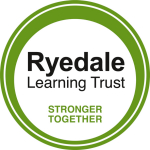Area of Study 2 covers C20th classical music, starting with a short, but challenging piece by Arnold Schoenberg, composed in 1909, which you can listen to below:
4. Peripetie - Schoenberg (GCSE Music Edexcel)
Very basic facts on...'Peripetie' - by Arnold SchoenbergFrom 'Five Orchestral Pieces'Set Work 4 for GCSE Music EdexcelFrom Area Of Study 2 - Music in the 20t...
Context
Before you start to dismiss the whole pieces as a noisy, disorganised row, you need to understand the concept and direction music took from 1850 onwards, particularly in terms of harmony.
Wagner’s Prelude to Tristan und Isolde
IMPORTANT – remember – that tonality means the key that you are in (major/minor), and how chromatic the music is. Harmony means types of chords
NEW CONCEPT – think about the function of harmony. Chords have jobs, and fit well in certain orders. Cadences are a good example of this. They ‘sound right’ because one Roman Numeral sounds good when it is followed by another – V-I for example.
Richard Wagner (1813-1883), was a German composer who wrote long and complicated operas. The orchestral prelude to Tristan und Isolde is a really important piece of music, because of the chromatic harmony that is used. The piece is so chromatic, that it is very difficult to tell what key it’s in at times. The opening is supposed to be in A minor, but it’s several bars in before you hear a tonic chord, and the use of silence confuses the tonality even more.
Just listen to the first couple of minutes, to get an impression of it.
Richard Wagner - "Tristan und Isolde", Prelude
Prelude to the first act from Wagner's "Tristan und Isolde", german opera in three acts. Author: Richard Wagner (1813-1883).Conductor: Wilhelm Furtwangler & ...
If you’re in school and can’t use YouTube, then click on the Grooveshark widget below:
After this piece, other composers started to stretch tonality further and further. Try listening to some Debussy or Faure on YouTube to hear other example of more modern tonal language.
Arnold Schoenberg (1874-1951)
It would be no exaggeration to say that Schoenberg is one of the most controversial composers ever. He changed the direction of music in the C20th. To read a biography and listen to other pieces by him, click here, on the BBC Radio website.
What did he do that was so radical?
He got rid of the key, and scale, creating atonality (no fixed key). This means there is no tonic (key note) in his music, so there is no note or key chord to build a composition around. This genre is called expressionism, and is the genre of Peripetie, the fourth Set Work.
Features of Expressionism
There are several key features of this style, which are explained here. Further down the page, you will be asked to find specific examples of them in the Set Work.
As mentioned above, this music is atonal.
- Pieces try and convey one intense, specific emotion.
- Instrumental sound, in the form of pitch range and timbre are considered as important as more traditional musical elements such as pitch and rhythm.
- Unusual combinations of instruments are used, or when an orchestra is used, it is often supplemented by non-standard instruments, such as contra-bassoon, cor anglais, etc.
- The range of dynamics and articulations in expressionist pieces is wide and often changes suddenly.
- Pieces are short, and use traditional structures, such as sonata form and rondo form.
During the 1910s, Schoenberg developed further a system to replace the key and scale, called serialism, which uses all twelve chromatic notes in a grid, and allows composers to pick particular rows and columns of the grid to create chords and melody.
Peripetie from Five Orchestral Pieces (1909)
To understand the unusual and challenging sound of this piece, we need to consider the following ideas, all of which were important in his compositions:
- Haupestimme (Principal melody) – obviously, this is an important melody in his composition. They are labelled in the score with an H and a bracket to show when they start and end.
- Nebenstimme (Secondary melody) – obviously, secondary melody, labelled N with a bracket.
- Hexachord – a group of six pitches, all different, which don’t move necessarily by step, but act a bit like a scale in terms of importance. There can be several different hexachords in one piece.
- Complement – a group of six pitches, left over once the hexachord has been formed.
- Melody lines with lots of angular leaps (because the hexachord and compliment don’t use steps).
- Extreme changes in dynamics, which happen very frequently.
- Frequent changes of tempo (which are mainly in German in the score – click here for help to translate them).
- The texture of the piece is very varied, because Schoenberg mixes the combination of instruments that he uses. There are only a few occasions when the whole orchestra plays, and there are many times when there are only a handful playing. The main texture of the piece is polyphonic.
- A large orchestra, with several additional instruments to bolster the sound and allow Schoenberg to create a wide range of orchestral sounds – a technique called klangfarbenmelodie.
- This piece is in rondo form – ABA’CA”.
Task
Go through your score and find examples of each of the techniques listed above. The listening questions about Schoenberg frequently test knowledge of all of these aspects of the piece.
Revision
As with all the pieces, there is a three-way process to learning everything you need to know about the piece:
- Know the basics (C) – title, composer, key, time signature, instrumentation etc. This needs learning to start with.
- Understand the detail (B/A) – the technical details of the piece, and how they relate to DR G SMITH. This needs you to have written up all the detail onto your score. Listening to the piece lots whilst following through the score is what is needed here.
- Hear the detail (A/A*) – being able to recognise the sound of all the technical language in the pieces, with no score in front of you. Listening to the piece without the score is what you need to do here.
This checklist document should help you with the process.


 Ryedale School is a partner in and co-ordinator for the Yorkshire Teaching School Alliance.
Ryedale School is a partner in and co-ordinator for the Yorkshire Teaching School Alliance.